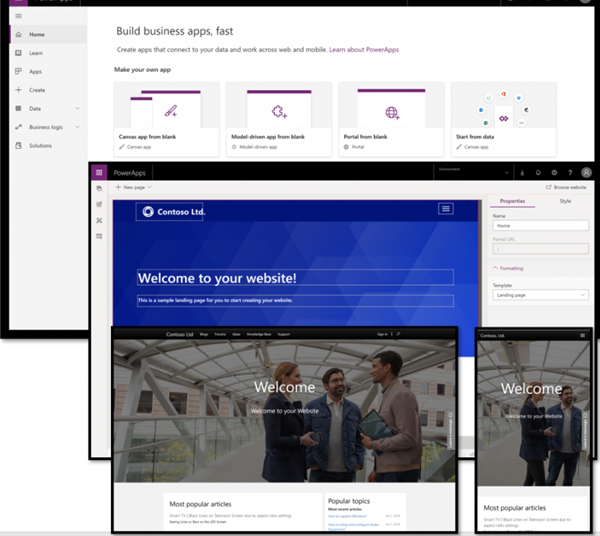It’s been a while since taking a Microsoft certification exam, but with the new MB-280 exam being launched in the last few days, I’ve obviously needed to take a look at it! It felt a little strange, as I’m now used to the certification renewal process (which is why I haven’t taken any exams in a while), but thankfully things went alright with the overall exam.
For those who haven’t been following the news, Microsoft made an announcement a few months back that some exams would be retiring, and the new MB-280 exam would be the replacement for this. In short, this is supposed to replace the MB-210 (Sales), MB-220 (Customer Insights – Journeys) & MB-260 (Customer Insights – Data). Malin Martnes wrote a good blog post in June – I’d suggest to take a look at it at for more general information around it.
Now I’m all up for new certifications being created & made available. However, and I know this could be considered controversial, I have ABSOLUTELY NO IDEA as to why this exam was created in THIS specific way. If an exam had been created, for example, to bring together the two sides of Customer Insights (ie to cover both Data & Journeys in a single exam), I think that would have been quite good.
But with having taken this, my thoughts (& feedback to Microsoft directly) is that they should un-deprecate (if that’s a word/phrase?) the MB-210 exam, and continue it forward. There’s no reason that I can see having Marketing & Sales together in a single exam – it feels like two (or technically 3?) lego bricks lumped together without any rhyme or reason.
The learning path for the exam was also launched in the last few days, and can be found at Study guide for Exam MB-280: Microsoft Dynamics 365 Customer Experience Analyst | Microsoft Learn
The official description of the exam is:
As a candidate for this exam, you’re a Microsoft Dynamics 365 customer experience analyst who has:
- Participated in or plans to participate in Dynamics 365 Sales implementations.
- An understanding of an organization’s sales process.
- An understanding of the seller’s perspective (user experience).
- The ability to demonstrate Dynamics 365 Customer Insights – Data and Customer Insights – Journeys capabilities.
You’re responsible for configuring, customizing, and expanding the functionality of Dynamics 365 Sales to create business solutions that support, automate, and accelerate the company’s sales process. You use your knowledge of customer experience capabilities in Dynamics 365 Sales and Microsoft Power Platform to inform the following design and implementation tasks:
- Configure Dynamics 365 Sales standard and premium features.
- Implement collaboration features.
- Configure the security model.
- Perform Dynamics 365 Sales customizations.
- Extend Dynamics 365 Sales with Microsoft Power Platform.
- Deploy the Dynamics 365 App for Outlook.
As a candidate, you need:
- An understanding of the Dataverse security model and features, including business units, security roles, and row ownership and sharing.
- Experience configuring model-driven apps in Microsoft Power Apps.
- An understanding of accounts, contacts, and activities.
- An understanding of leads and opportunities.
- An understanding of the components of model-driven apps, including forms, views, charts, and dashboards.
- An understanding of model-driven app personal settings.
- Experience working with Dataverse solutions.
- An understanding of Dataverse, including tables, columns, and relationships.
- Familiarity with Power Automate cloud flow concepts, such as connectors, triggers, and actions.
More can be found at the exam page itself, which is located at Exam MB-280: Microsoft Dynamics 365 Customer Experience Analyst (beta) – Certifications | Microsoft Learn
Now during my exam, I was looking forward to seeing the ‘new’ capability around being able to use Microsoft Learn during the exam (new to me – as I haven’t taken any other exams in the last year or so since it was announced!). However there didn’t seem to be any capability to launch Microsoft Learn – I’m not sure why it wasn’t available, as this isn’t a Fundamental level exam
Questions also used the older terms of references rather than the newer/accepted terms – ie using ‘field’ instead of ‘column’, and ‘entity’ instead of ‘table’. Again, I have no idea why this is – all other exams (including the renewals for them) are using these properly (in my summary below I have ensured I use the correct terms).
So, as I’ve posted before around my exam experiences, it’s not permitted to share any of the exam questions. This is in the rules/acceptance for taking the exam. I’ve therefore put an overview of the sorts of questions that came up during my exam. (Note: exams are composed from question banks, so there could be many things that weren’t included in my exam, but could be included for someone else!). It’s also in beta at the moment, which means that things can obviously change.
I’ve tried to group things as best together as I feel (in my recollection), to make it easier to revise.
- Sales Apps
- Configuring forms, columns & tables
- Configuring security roles & access to records
- Configuring relationships between records (including deletion properties)
- Sales Mobile App – security & deployment
- Forecasting – setting up & configuring
- Configuring Goals
- Configuring Opportunities
- Handling currencies
- Copilot for Sales
- Setting up & deploying to users
- Configuring access
- Outlook App
- Deploying & setting up
- Configuring forms & information
- Exchange
- Connecting to mailboxes
- Configuring folder permissions
- Configuring multiple domains
- Product Families & Catalogue
- Creating & setting up
- Configuring options
- Adding items to be used
- Price Lists
- Creating & setting up
- Configuring options, including discounts
- Using time-restricted price lists
- Handling currencies
- Document Management
- Different document management capabilities
- Usage of SharePoint in different ways
- Data Import
- Usage of Power Query
- Data manipulation
- Handling duplicate records
- SMS
- Setting up & configuring SMS provider
- Journeys
- Different triggers to use based on scenarios & requirements
- How to trigger journeys
- How to set up emails to be used within a journey
- Segments
- Different types of segments
- Creating & modifying segments
- Searching/Filtering
- Using Advanced Find
- Setting up/modifying queries to include/exclude records based on conditions
- Business Process Flows
- Modifying business process flows
- Handling conditions within business process flows
As a Sales exam, it seemed alright. But as mentioned above, the Customer Insights questions just seemed strange to me – I’d expect a consultant to be very technically skilled in Customer Insights, but not in Sales (& vice versa), so I’m not understanding bringing these two sides together.
I’m going to be quite interested in seeing how the exam is actually launched (as it’s currently in Beta of course). Having chatted with a few others who have taken the exam (whilst obviously respecting the NDA!), they also can’t really understand the landscape. Personally, I think that if it continues like this, Microsoft is going to hear quite a few complaints around it.
I hope that this is helpful for anyone who’s thinking of taking it – good luck, and please do drop a comment below to let me know how you found it! I’d also be interested in your thoughts/opinions around the direction that Microsoft has taken for this!









